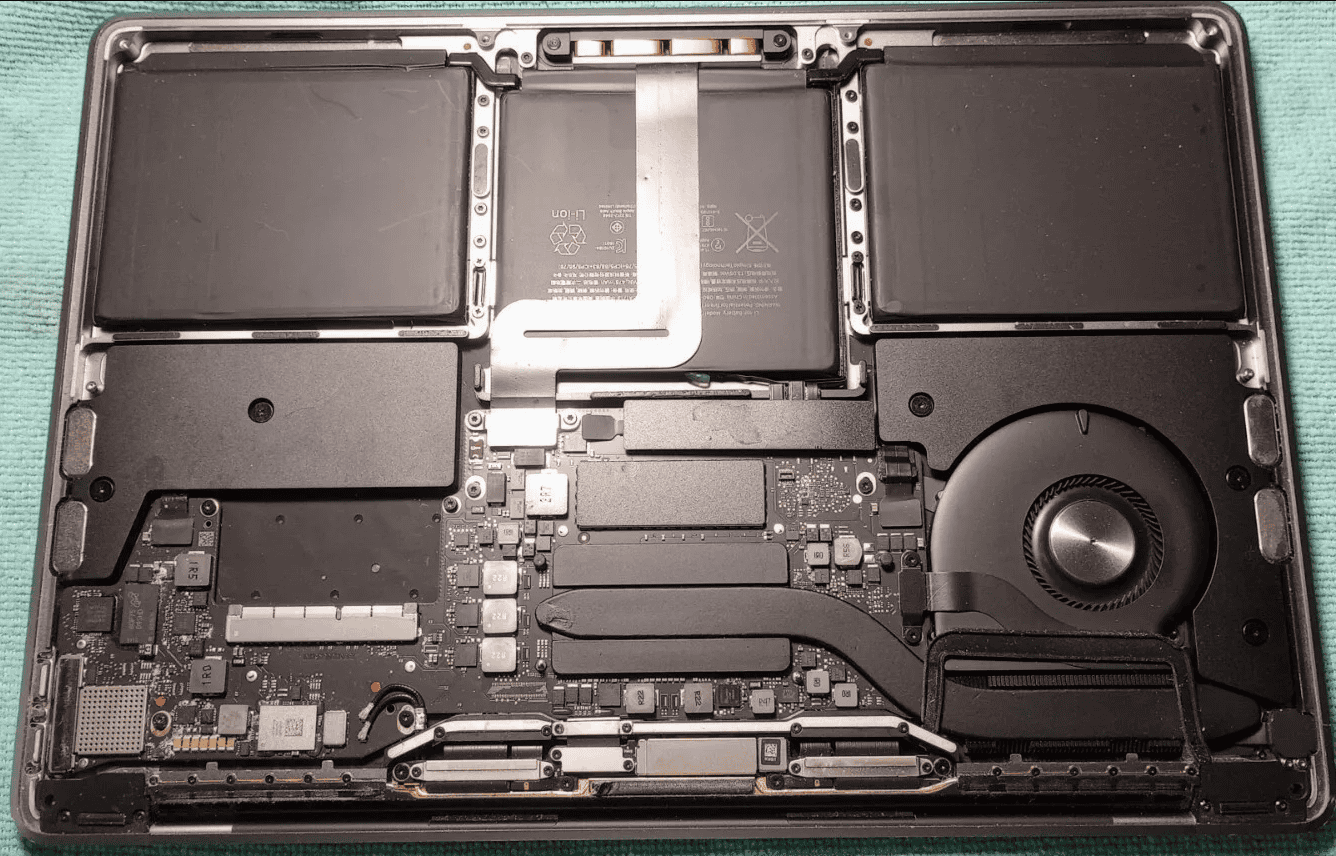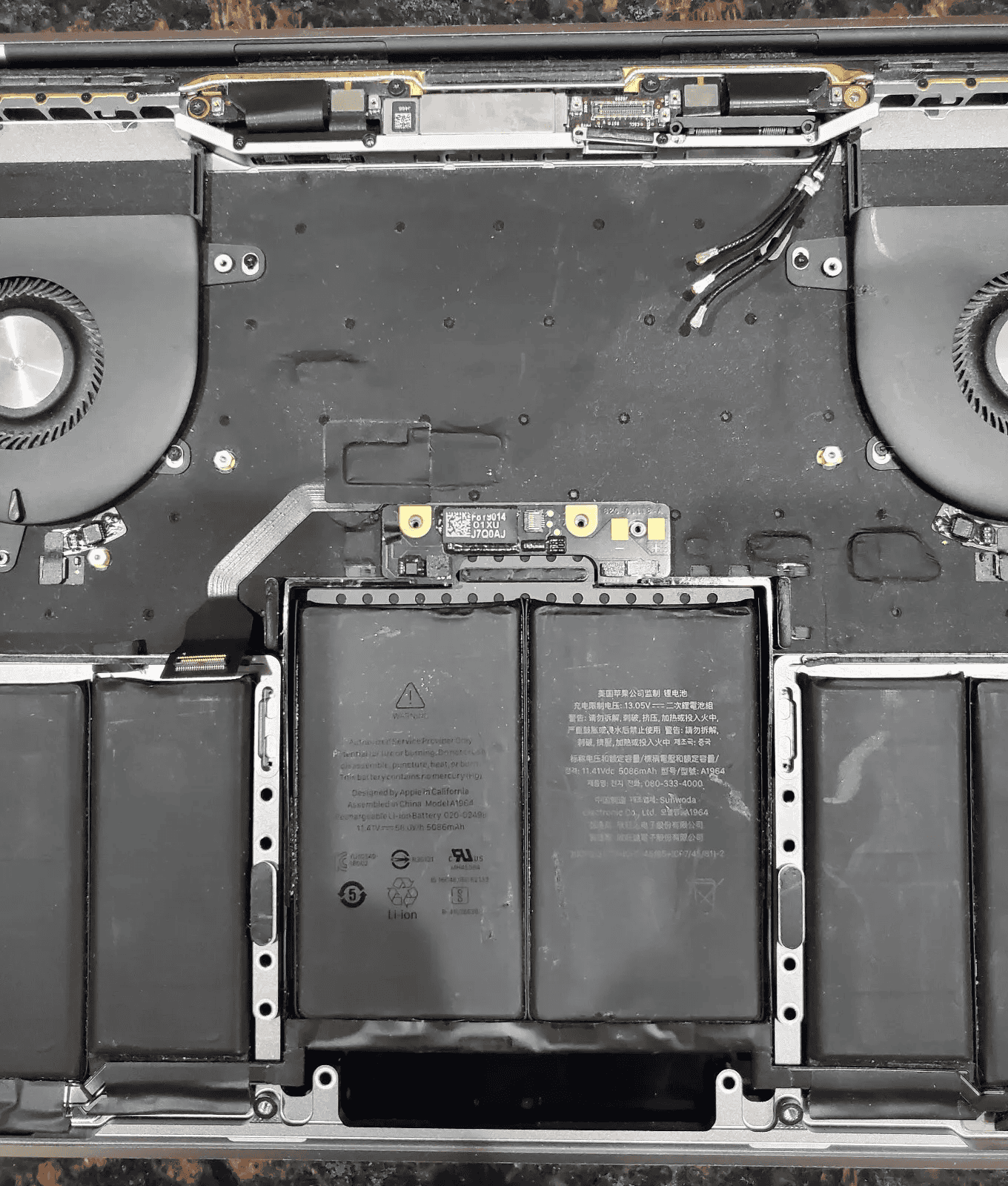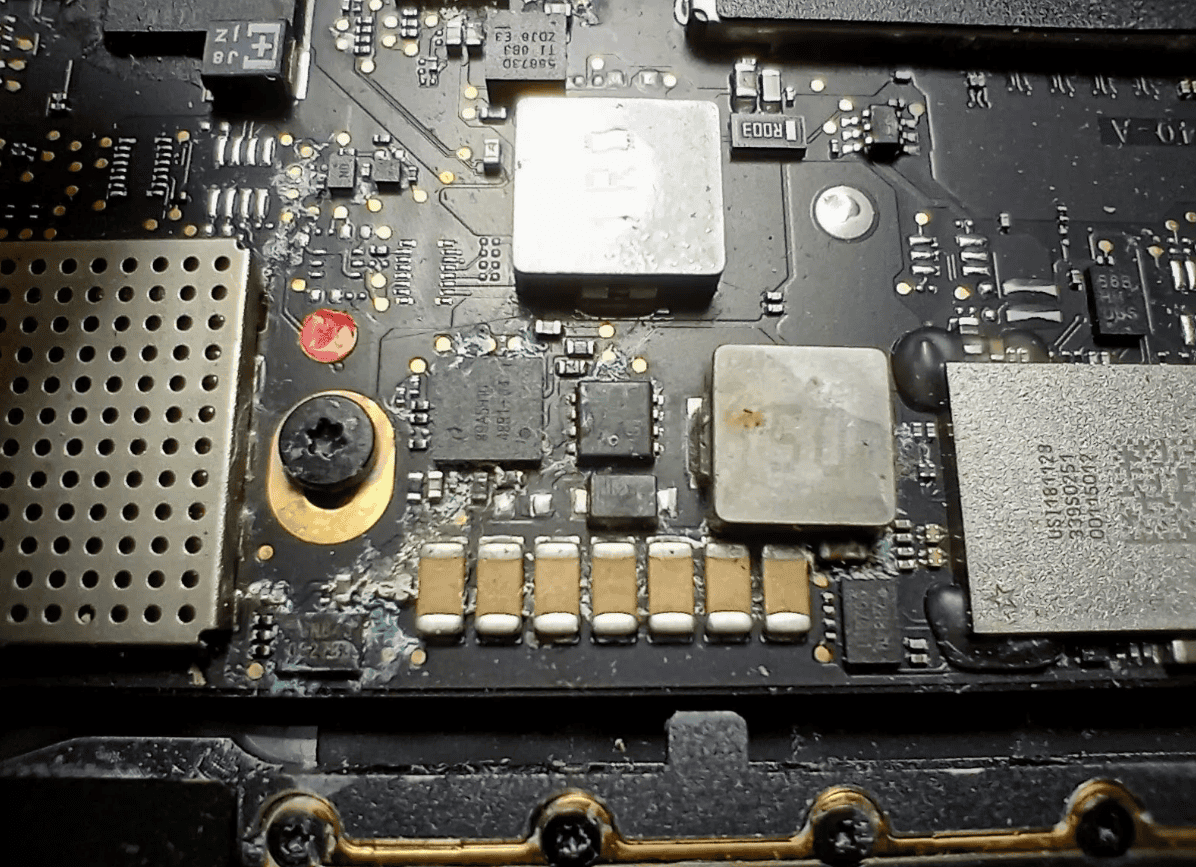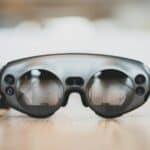Liquid spills on MacBooks can cause significant damage, often reaching the delicate components beneath the keyboard and trackpad. When liquid makes contact with a MacBook’s inner workings, it can cause immediate short-circuits and corrosion over time. To mitigate the risk and salvage the device, a precise and immediate approach is necessary for handling such accidents.
Repairing a MacBook that has suffered liquid damage is a nuanced process that involves thorough inspection, cleaning, and potential replacement of affected components. Professional services have specialized tools and techniques, such as high-powered microscopes for diagnosis and ultrasonic cleaners for board-level repair. These procedures seek to restore the MacBook to its optimal functioning state without causing further damage.

Rescuing Your MacBook from Liquid Damage
Spilled coffee or a splash of water on your MacBook? Liquid damage can be a nightmare, but quick action and the right steps can potentially save your device. Here’s a guide to help you navigate this stressful situation.
Immediate Actions
Every second counts when liquid hits your MacBook. Act fast to minimize damage:
- Power Off Immediately: Don’t hesitate. Hold down the power button to shut down your MacBook as quickly as possible.
- Unplug Everything: Disconnect the power adapter, external drives, and any other connected devices.
- Turn It Upside Down: Flip your MacBook upside down to prevent liquid from seeping further inside.
- Wipe It Down: Use a clean, absorbent cloth to wipe away any visible liquid on the surface and keyboard.

Don’t Do This!
Avoid these common mistakes that can worsen the damage:
- Don’t use a hairdryer: Heat can damage sensitive components.
- Don’t shake or tap your MacBook: This can spread the liquid further.
- Don’t try to turn it on: Attempting to power it on can cause short circuits.
- Don’t put it in rice: Rice is not an effective solution and can introduce dust into your MacBook.
Assessment and Options
Once you’ve taken immediate action, assess the situation:
- What type of liquid was spilled? Water is less damaging than sugary or acidic drinks.
- How much liquid was spilled? A small splash is less concerning than a full cup.
- Are there any visible signs of damage? Check for corrosion or discoloration.
Based on your assessment, you have a few options:
| Option | Description |
|---|---|
| Professional Repair | Take your MacBook to an authorized Apple service provider or a reputable repair shop. This is the safest option, especially for severe damage. |
| DIY Repair | If you’re tech-savvy and comfortable with electronics, you can attempt to repair it yourself. However, this can be risky and void your warranty. |
| Data Recovery | If your MacBook is beyond repair, focus on recovering your data. A professional data recovery service can help retrieve your files. |
DIY Repair Tips (Proceed with Caution)
If you choose the DIY route, here are some tips:
- Consult online resources: Look for detailed guides and videos specific to your MacBook model.
- Use the right tools: Invest in a quality toolkit with the necessary screwdrivers and spudgers.
- Take your time: Disassemble your MacBook carefully and document each step.
- Clean affected areas: Use isopropyl alcohol and a soft brush to clean any corrosion or residue.
- Reassemble and test: Once everything is dry and clean, reassemble your MacBook and test its functionality.
Remember, liquid damage can be unpredictable. Even with careful repair attempts, there’s no guarantee of success. Back up your data regularly to minimize potential data loss in such situations.

Key Takeaways
- Liquid spills require prompt and careful attention to prevent extensive MacBook damage.
- Specialized equipment and techniques are essential for accurately diagnosing and repairing liquid damage.
- Professional repair services can ensure a reliable fix that considers all potentially affected MacBook components.
Comprehensive Repair Guide for MacBook Liquid Damage
Liquid damage in MacBooks requires a precise approach to avoid further damage and costly repairs. This section provides step-by-step guidance for handling a water-damaged MacBook.
Assessment and Immediate Response
When a MacBook encounters liquid, immediate action reduces risks of severe damage. You should power off the laptop, disconnect it from any power source, and avoid the urge to power it back on. Place the MacBook in a tent position to help drain fluids and discourage corrosion within the device.
Disassembly and Cleaning of Internal Components
Disassembling a MacBook Pro for cleaning requires care and proper tools. Remove components such as the battery, logic board, SSD, and keyboard if liquid has penetrated these areas. Clean any visible corrosion or residues with isopropyl alcohol and consider using an ultrasonic cleaner for a thorough cleansing of the logic board.

Diagnosis and Handling of Electronic Damage
An inspection under a stereo microscope can reveal electronic damage due to liquids. Short circuits on the motherboard are common after a spill. A certified technician can identify and address problems, replacing SMD components and repairing damaged circuitry.
Repair and Replacement Procedures
Components affected by water, such as the keyboard, trackpad, battery, or logic board, often require replacement. It’s crucial to source the correct parts and follow proper installation techniques during reassembly.
Data Management and Recovery
Preserving data integrity is vital. Before attempting repairs, try to back up data from the SSD. In cases of damage, professional data recovery services may be necessary.
Preventative Measures and Protection
Prevention is better than repair. Use protective cases designed for MacBooks and avoid exposing the laptop to environments with high humidity or accidental spills. Regularly back up data to safeguard against unexpected data loss.
Repairing MacBook liquid damage involves precise steps and careful handling. It’s recommended to consult with or employ professional repair services when dealing with severe liquid damage, ensuring the best chance at reviving your MacBook without risking further issues.







